Back in the day
Delving into history, it was King Yasovarman II in the middle of the 12th century that began building the Preah Pithu group, though it continued through the 13th and into the 14th century. There's a mix of Hindu and Buddhist iconography at the temples, with Temple X full of friezes of Buddha. The French conservators of EFEO restored the temples in 1908 and 1920 and it's worth scouting around the fallen stones and fragments on the ground surrounding the main shrines for a few gems of sculpted stone. Back in time Yasovarman was assassinated and Angkor was sacked by the invading Chams and abandoned before being revitalised by the king of kings, Jayavarman VII from 1181 onwards who went onto construct the Bayon, Ta Prohm and many more temples. Here are a final flurry of photos from Temple U or Monument 482 as it's also known, one of the five shrines of the Preah Pithu group.
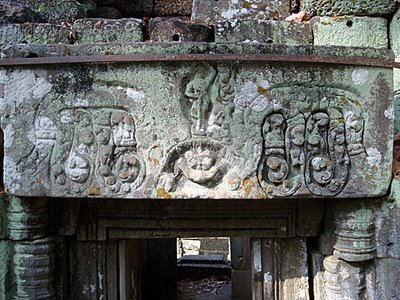 This lintel looks unfinished and could represent Krishna lifting Mount Govardhana above a grinning kala
This lintel looks unfinished and could represent Krishna lifting Mount Govardhana above a grinning kala
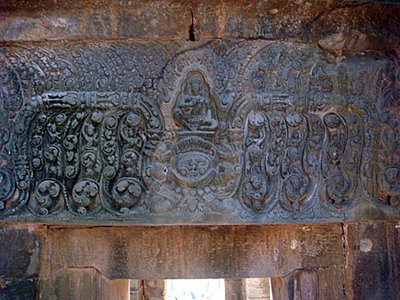 Vishvakarma, who symbolises the idea of a powerful god and of central power, sits above a kala with typical Bayon floral relief either side
Vishvakarma, who symbolises the idea of a powerful god and of central power, sits above a kala with typical Bayon floral relief either side
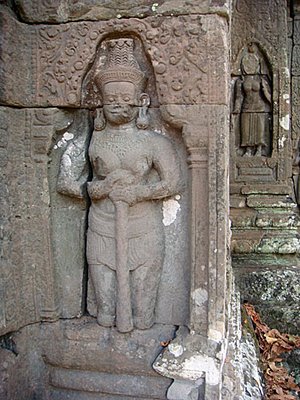 This dvarapala guardian appears to have lost his feet in the restoration of the temple in the early 1900s
This dvarapala guardian appears to have lost his feet in the restoration of the temple in the early 1900s
 This lintel looks unfinished and could represent Krishna lifting Mount Govardhana above a grinning kala
This lintel looks unfinished and could represent Krishna lifting Mount Govardhana above a grinning kala Vishvakarma, who symbolises the idea of a powerful god and of central power, sits above a kala with typical Bayon floral relief either side
Vishvakarma, who symbolises the idea of a powerful god and of central power, sits above a kala with typical Bayon floral relief either side This dvarapala guardian appears to have lost his feet in the restoration of the temple in the early 1900s
This dvarapala guardian appears to have lost his feet in the restoration of the temple in the early 1900sLabels: Angkor Thom, Preah Pithu
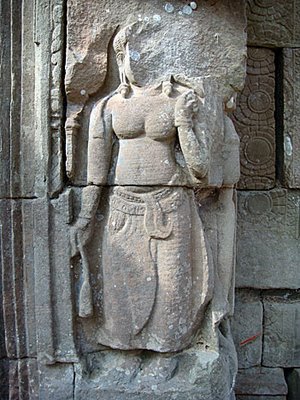
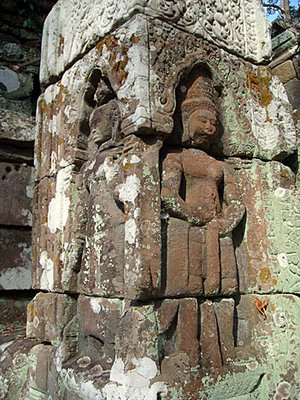
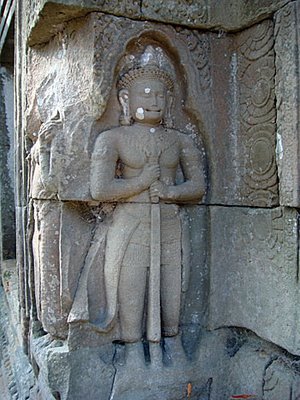
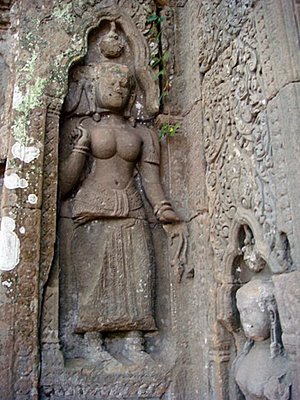
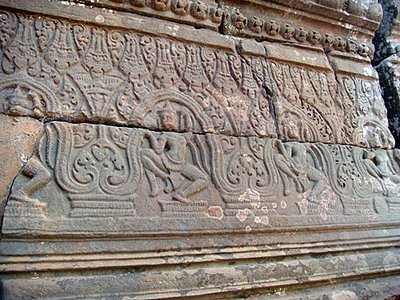
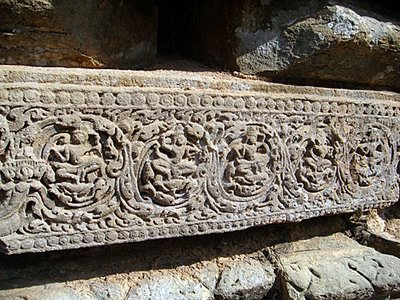


0 Comments:
Post a Comment
<< Home